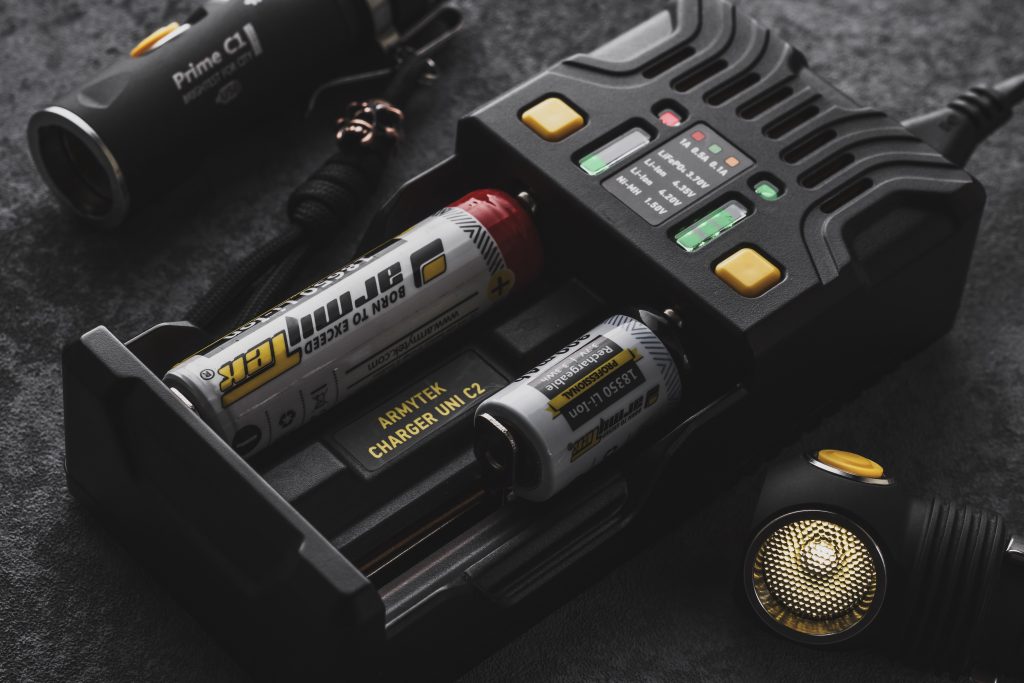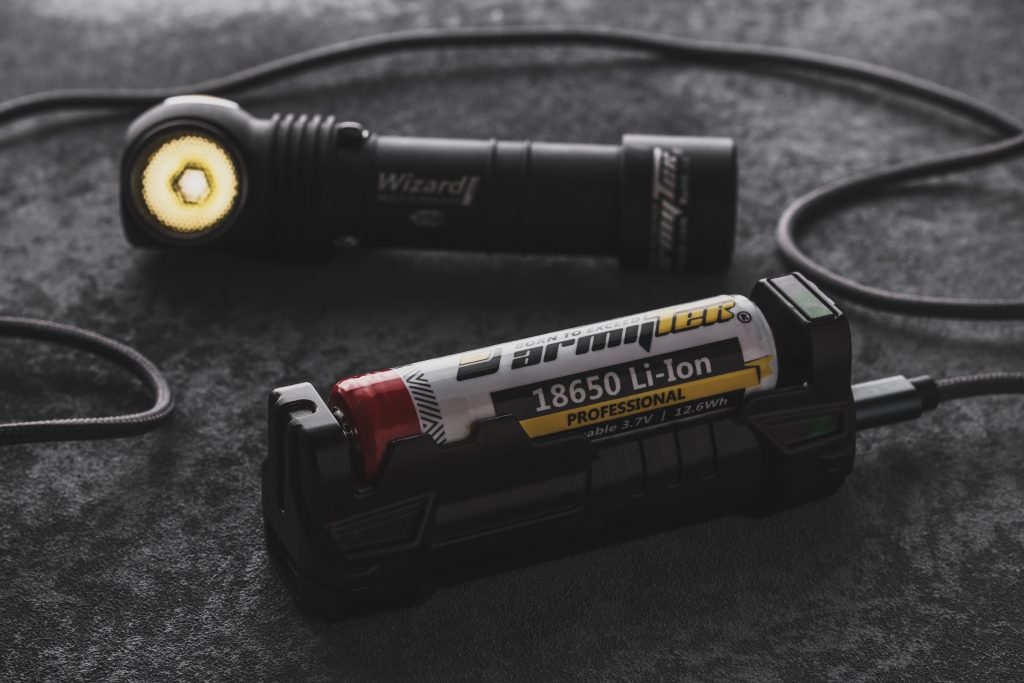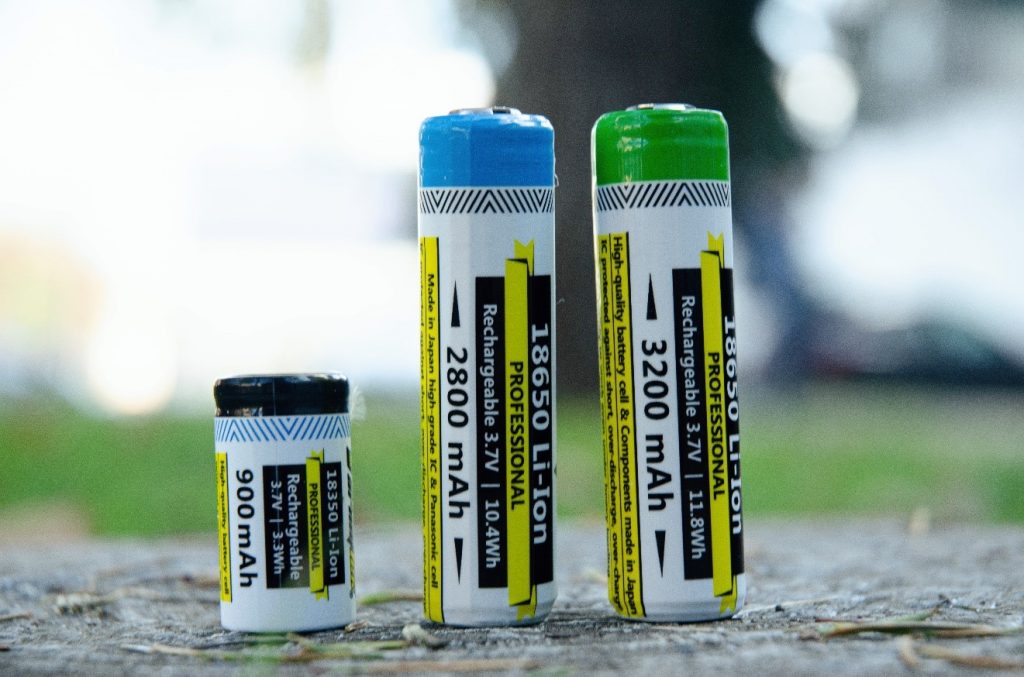A battery is the most popular power source for basic portable devices. We use batteries in wall clocks, remote controls, bathroom scales. There must be at least one battery in your house right now. How did you choose it? Probably by simply looking at the required size. But batteries are so much more than that.
A battery is the most popular power source for basic portable devices. We use batteries in wall clocks, remote controls, bathroom scales. There must be at least one battery in your house right now. How did you choose it? Probably by simply looking at the required size. But batteries are so much more than that.
What is a battery?
A battery can be defined as one or more electrochemical cells that are capable of converting stored chemical energy into electrical energy. It has positive (+) and negative (-) terminals.
Batteries are available in numerous sizes ranging from the miniature cells used in wrist watches and power hearing devices to giant ones that offer standby power for data centers. The most popular battery sizes are AA, AAA, C, 18650, 18350.
They are also different in chemical composition, capacity and rechargeability. The quality of a battery is rather significant, too, because it influences both duration and performance. If you use high-quality batteries, flashlight performance improves. Using quality batteries also decreases the risk of leakage. It is particularly important during emergencies when you want to get the longest lifespan possible out of your essential device.

Types of batteries
Batteries are generally classified into primary and secondary. Primary batteries are disposable, meaning they are built to be used only once. This is because the chemical reactions that take place within primary batteries cannot be reversed. These battery types are normally used in portable devices which require minimal current drain. Common varieties of primary batteries include Alkaline batteries and Zinc-Carbon batteries.
Secondary batteries, also called rechargeable batteries, are built to be reused many times. These batteries can be recharged upon the application of electric current, which helps to reverse the chemical reactions that take place when the battery is used. The most popular rechargeable batteries are Lead-Acid (PbAc), Nickel-Cadmium (NiCd), Nickel-Metal Hydride (NiMH) and Lithium-Ion (Li-Ion).

How to choose the battery you need?
Over the last few years the range of battery types has widely expanded. That’s because battery producers are perfectly aware of their clients’ needs and do their best to meet the expectations. In order to help you not to get puzzled by numerous types of batteries we examined and compared the batteries from the point of longevity, energy density, load characteristics, self-discharge, maintenance and cost.
Alkaline batteries, introduced in the middle of the 20th century, are made of zinc and manganese dioxide with alkali as an electrolyte. This is the most popular type of disposable power supplies with good technical specifications. Alkaline batteries can work in devices with high energy consumption: children’s toys, remote controls, lamps, cameras, etc.
Advantages:
- Manufactured in standardized cylindrical forms, interchangeable with Zinc-Carbon batteries, and in button forms
- Current voltage is generated evenly throughout the working time
- 5 times longer storage period than that of Zinc-Chloride batteries
- Less sensitive to cold temperatures in comparison to cheaper alternatives
Limitations:
- The amount of current an alkaline battery can deliver is proportional to its size
- The price is 4-5 times higher than that of Zinc-Chloride batteries
- Electrical capacity reduces significantly when used in electrical appliances that require short-term current pulses of high intensity
- Attempts to recharge standard alkaline batteries may cause rupture or leakage of hazardous liquids which will corrode the equipme
Nickel-Cadmium (NiCd) batteries have been widely used for many years. A NiCd battery is applied where high discharge level, long life and low price are relevant. As a NiCd contains toxic metals such as cadmium, it is environmentally unfriendly and must be recycled or disposed of properly.
The batteries also have “memory effect”. When you recharge a NiCd battery that hasn’t been completely discharged, it “memorizes” the previous charge level and the maximum capacity becomes equal to this level. The “memory effect” is determined by crystallization of the battery’s substances and can decrease your battery’s life span or even make it useless. In order to avoid this, you should fully discharge the battery and fully charge it at least once in a few weeks.
Advantages:
- Fast and easy charge even after long-time storing
- Large number of charge / discharge cycles — if thoroughly maintained, a NiCd guarantees over 1.000 charge / discharge cycles
- Excellent load performance — a NiCd permits recharging at low temperatures
- Long shelf life in any condition of charge
- Low cost
- Available in various types and sizes
Limitations:
- Comparatively low energy density
- “Memory effect”
- Environmentally unfriendly
- Comparatively high self-discharge — requires recharging after storing
- Rather heavy
Maintenance: Nickel-Cadmium batteries can be kept both in a charged or discharged condition. Nevertheless, long storing can accelerate battery self-discharge, and result in the deactivation of the reactants. Although the cells can be kept at the temperatures between -20°C and +45°C, heat can provoke deterioration of the active chemicals, so keep the cells in a clean, cool, dry, non-corrosive place. After prolonged storing, 2-3 full discharge cycles may be required to renew its complete capacity.

Nickel-Metal Hydride (NiMH) batteries are less influenced by the “memory effect” and are easier in maintenance. A NiMH battery is notable for higher energy density in comparison with a NiCd. It means that you get increased runtime from a much lighter battery. There are still some disadvantages. A NiMH has problems functioning at very low or high temperatures. Although it doesn’t contain heavy metals, it can’t be completely recycled.
Advantages:
- 30-40% higher capacity than in a usual NiCd
- Less evident “memory effect” than in a NiCd. Full discharge/charge cycles are needed less often
- Easy storage
- Environmentally friendly
Limitations:
- Limited lifetime — when frequently deep cycled, particularly at high load currents, the operation starts to worsen after 200 to 300 cycles
- Limited discharge current — though a NiMH battery can deliver high discharge currents, periodic discharges with high currents decrease the battery’s life span
- The NiMH produces more heat during charge and needs a longer charge time compared to the NiCd
- High self-discharge — the NiMH has about 50% higher self-discharge in comparison with the NiCd. Modern chemical additives enhance the self-discharge but at the expense of lower energy density
- Operation deteriorates when stored at high temperatures — the NiMH should be kept in a cool place and at the condition of about 40% charge level
- High maintenance — battery should be fully discharged regularly to avoid crystalline formation
Maintenance:
Nickel Metal Hydride batteries should be kept at 40% charge level. As NiMH cells are notable for a higher self-discharge rate, they will lose more charge while stored and will most likely demand recharging before they can be used again.

Best batteries from Armytek
Lithium Ion (Li-Ion) is the most rapidly developing battery type and a new standard for portable power. Li-Ion is applied where light weight and high energy density are important. It weighs about 20-35% less but generates the same amount of energy as a NiMH. These batteries don’t suffer from “memory effect” unlike NiMH and NiCd batteries. Their substances are non-hazardous, but as lithium inflames very easily, they need special handling.
Advantages:
- Low self-discharge – 3-6 times lower in comparison with rechargeable cells like NiCd and NiMH
- Efficiency at low temperatures
- High energy density allows to increase battery capacity
- Low-maintenance — no periodical discharge is required, no “memory effect”
- Lightweight compared to other batteries of similar size
- Available in different shapes
- Eco-friendly battery without any free lithium metal
Limitations:
- Needs additional protection to avoid overcharge / deep discharge and shortcuts
- Unprotected Lithium-Ion battery can’t be safely applied in many devices
- Liable to aging, even if not used. Keep the battery in a cool place at 40% charge level to decrease the aging effect
- Moderate discharge current
- High price — about 40% higher than that of a NiCd
Maintenance:
Lithium-Ion batteries require -20°C to 60°C temperature range. For longer storing period temperatures from -20°C to 25°C are recommended. Cells should be kept at a charge level of 30% to 50%.
Armytek Vape Series batteries are special high amp 18650 Li-Ion batteries for e-cigarettes. 18650 Li-Ion 3000mAh batteries, based on LG HG2 batteries, are ideal for gadgets where high power consumption is required. Vape Series batteries are 30 amp 18650 batteries, meaning their characteristics include 30A pulse and 20A continuous discharge. Vape Series batteries are not provided with a PCB (Protection Circuit Board) but do have a safety vent with thermal cut-off protection.

General Battery Care Tips
Proper battery storage not only prolongs battery life, but also keeps you safe. The process is quite simple. Just follow the rules listed below.
1. Store batteries in the original package. Storing batteries encapsulated in their package helps protect them against environmental impacts such as humidity. It also prevents their terminals from contacting with other metals.
2. Keep batteries in a cool, dry place. When you choose a place to keep your batteries, make sure it’s not exposed to humidity or extreme temperatures as these conditions can provoke deterioration. Store them at around 15°C.
3. Keep rechargeable batteries at a 40% charge level. Rechargeable batteries with nickel or lithium chemistry composition should be stored at around 40% charge level.
4. Avoid contacts between negative and positive terminals of two batteries. If negative and positive terminals of different cells are in contact, they may conduct electricity and the batteries might be discharged.
5. Don’t remove plastic caps off your batteries’ terminals when you don’t use them. Certain batteries have plastic caps fitted over the terminals. If you don’t intend to use the batteries immediately after purchase, leave these caps on to prevent the batteries from losing their charge.
6. Remove batteries from rarely applied electronics. If batteries remain in electronic devices, they discharge faster.
7. Never keep your batteries in the freezer since this decrease their ability to charge completely.
Remember: the conditions of battery storage depend on the active chemicals used in the cells.
Following our tips you can significantly increase the efficiency of your batteries and enjoy their operation for a much longer period!
Excellent article, thanks.